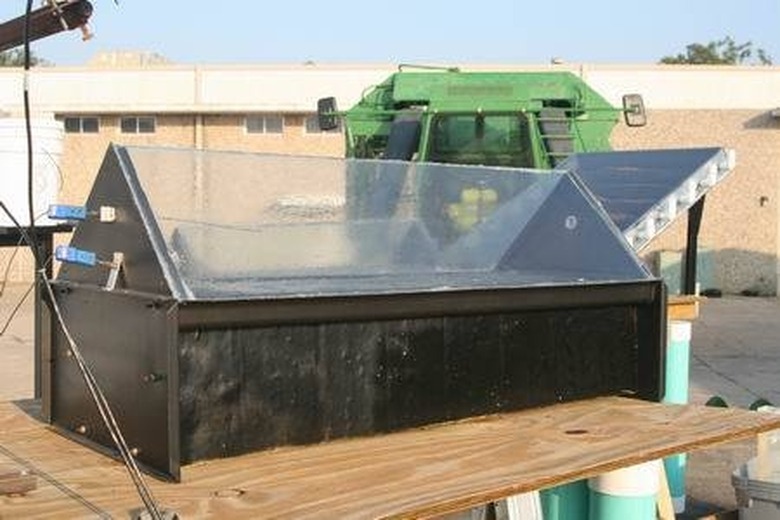How Does A Solar Still Work?
What Is a Solar Still?
What Is a Solar Still?
A solar still is a green energy product that uses the natural energy of the sun to purify water. The solar-still process uses the sun instead of other sources such as fossil fuels to gain the energy needed for purification. Solar stills are then able to supply pure water for drinking and cooking, even in areas where there are no other sources of energy, while still being friendly to the environment.
How Is It Used?
How Is It Used?
Solar stills are used across the world to provide clean, drinkable water to the masses. Some solar stills are used in homes to help reduce energy costs and pollution, while others are used in poverty-stricken areas around the world where there are no other sources of clean drinking water.
Equipment
Equipment
A solar still is made up of a two water troughs and a piece of glass running across the top of the water containers. Dirty water is placed in one of the troughs, while the other remains empty. The glass is placed across the top at an angle, angling directly down into the empty trough. The bottom of the trough containing the dirty water is usually painted black to help absorb the energy from the sun.
Evaporation
Evaporation
A solar still works on two scientific principles: evaporation and condensation. First, the water that needs to be purified is placed in the trough with the black bottom. The solar still is then allowed to sit in the sun, which allows the still to absorb the sun's short-wave energy. As the energy is absorbed, it starts to heat the water. As the temperature of the water rises, the liquid H20 is converted into steam and evaporates towards the glass ceiling, leaving anything that is not pure H20 in the trough below.
Condensation
Condensation
The second scientific principle on which a solar still acts is condensation. After the water begins to evaporate, it hits the glass ceiling. The water slowly condenses on the glass, causing pure water droplets. Since the glass is angled down toward the second trough, the water droplets roll down and into the clean water trough. Because none of the minerals, bacteria or other substances are able to evaporate with the pure H20, the water droplets that end up in the second trough are simply purified, and are now safe for drinking and cooking.
PH Levels
PH Levels
In most other sources of purification, such as commercial water-bottling plants, the water is boiled as part of the purification process. As the water is boiled, the PH level drops dramatically, causing flat-tasting water. With a solar still, the water is purified naturally, allowing the PH levels to stay balanced.
Cite This Article
MLA
Sherwood, Chris. "How Does A Solar Still Work?" sciencing.com, https://www.sciencing.com/solar-still-work-4696783/. 24 April 2017.
APA
Sherwood, Chris. (2017, April 24). How Does A Solar Still Work?. sciencing.com. Retrieved from https://www.sciencing.com/solar-still-work-4696783/
Chicago
Sherwood, Chris. How Does A Solar Still Work? last modified March 24, 2022. https://www.sciencing.com/solar-still-work-4696783/
